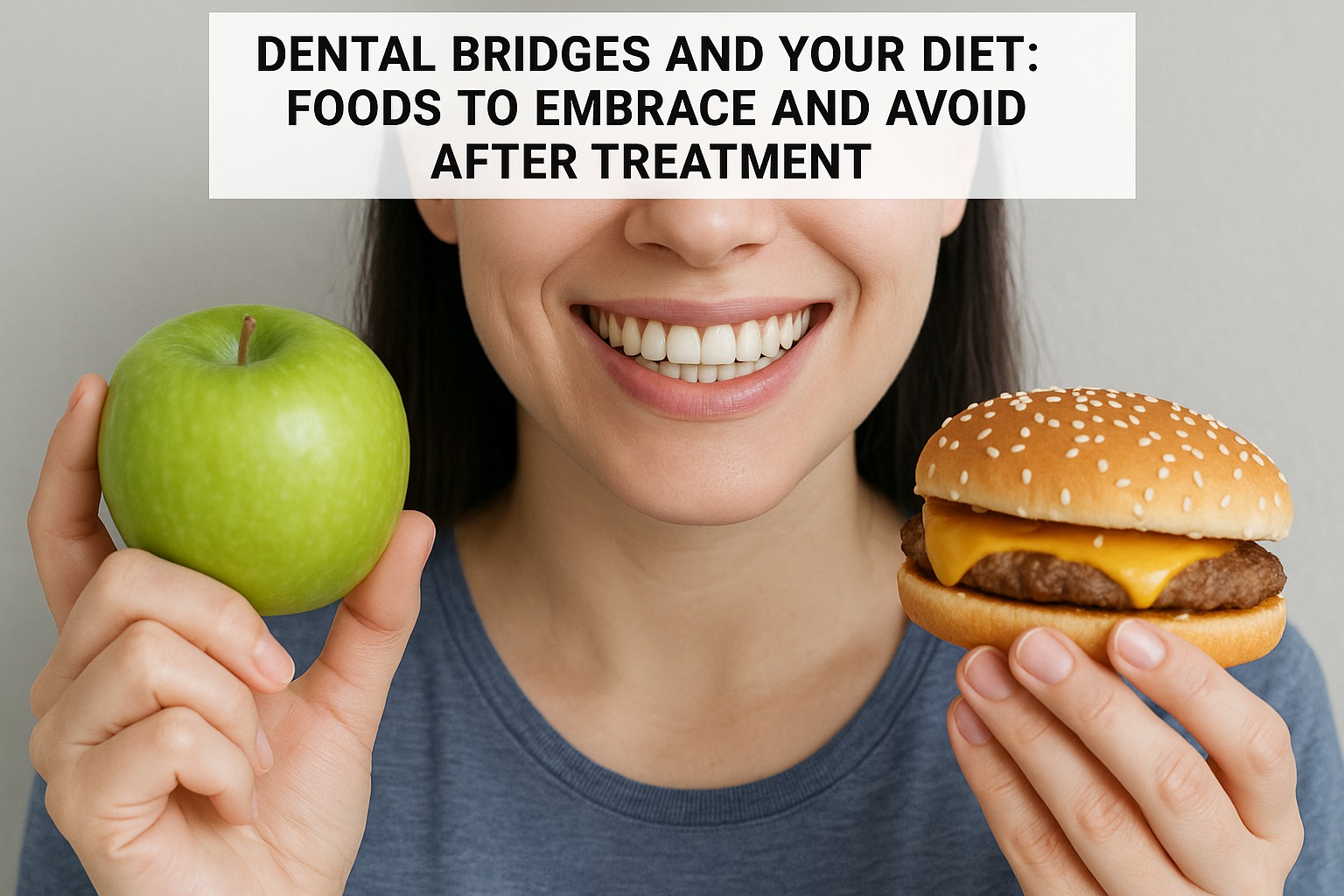Getting a dental bridge is an exciting step toward restoring your smile, confidence, and ability to chew properly. At The Dental Place, we believe that proper care doesn’t stop when you leave the dentist’s chair. What you eat—and avoid—after getting a dental bridge plays a critical role in your healing process and the long-term success of your restoration.
In this guide, we’ll walk you through the best foods to eat after your dental bridge procedure and the ones to avoid to keep your new smile looking and functioning its best.
The First Few Days: Soft Is Smart
Right after getting your dental bridge, whether it’s traditional, cantilever, Maryland, or implant-supported, your mouth needs time to adjust. Your gums and surrounding teeth may feel sore or sensitive, especially if extra procedures like tooth extraction or root canal were involved.
✅ Best Foods During Initial Recovery:
Stick to soft, non-acidic, non-spicy foods that require minimal chewing. These foods help you avoid unnecessary pressure on your bridge while your mouth adjusts.
- Mashed potatoes or sweet potatoes
- Yogurt or Greek yogurt (unsweetened)
- Scrambled eggs
- Oatmeal or soft cereals
- Smoothies (avoid seeds or chunks)
- Cooked vegetables (well-steamed or boiled)
- Soups and broths (lukewarm, not hot)
Remember to chew on the side opposite your new bridge during the first few days if your dentist recommends it.
As You Heal: Introducing More Texture
After a few days, once your mouth starts to feel better, you can slowly introduce foods with more substance. This period is essential for gradually strengthening the muscles and getting used to your new bite.
✅ Foods to Add as You Heal:
- Pasta and noodles (soft-cooked)
- Soft fruits like bananas, avocados, and peaches
- Rice and risotto
- Tender fish and well-cooked chicken
- Tofu or scrambled paneer
- Soft sandwiches with crust removed
- Cheese (soft varieties like mozzarella or brie)
Be sure to continue avoiding anything hard, crunchy, or sticky at this stage. Your bridge is still settling in, and sudden pressure or tugging can disrupt the fit or even damage it.
What to Avoid: Protecting Your Bridge for the Long Term
Even after full recovery, there are certain foods and habits that can harm your dental bridge. While bridges are durable and designed to function like natural teeth, they are not indestructible.
🚫 Foods to Avoid Long-Term:
- Sticky foods – Caramel, chewing gum, toffee, and gummy candies can loosen or dislodge your bridge.
- Hard foods – Ice, hard candies, popcorn kernels, and nuts can crack or chip the bridge.
- Chewy breads – Bagels, crusty rolls, and tough pizza crusts can pull on the bridge structure.
- Overly hot or cold items – Extreme temperatures can cause sensitivity or discomfort, especially right after placement.
- Sugary foods and drinks – These promote decay in the supporting teeth and can compromise the bridge’s longevity.
If you do indulge in any of these foods occasionally, be sure to chew cautiously and clean your teeth thoroughly afterward.
Healthy Eating for a Healthy Smile
A balanced diet supports not just your bridge, but your overall oral health. Focus on nutrient-rich foods that strengthen gums, bones, and teeth:
- Calcium-rich foods like milk, yogurt, almonds, and leafy greens to support bone health.
- Vitamin C from citrus fruits, bell peppers, and broccoli to keep your gums healthy.
- Lean protein to support healing and tissue repair.
- Water – Hydration helps wash away food particles and bacteria, keeping your mouth clean.
Final Tips from The Dental Place
- Chew evenly: Once healed, try to use both sides of your mouth equally to avoid placing too much pressure on the bridge.
- Cut food into smaller bites: This makes it easier to chew and reduces wear and tear.
- Stay consistent with oral hygiene: Brush twice a day, floss (using a floss threader around the bridge), and rinse with a dentist-recommended mouthwash.
- Schedule regular check-ups: Visit The Dental Place for routine exams to ensure your bridge remains secure and your supporting teeth stay healthy.
Your Bridge to Better Living Starts Here
At The Dental Place, we understand that dental work is more than a procedure—it’s a pathway to a better quality of life. Eating comfortably, speaking clearly, and smiling confidently are all possible with the right care.
If you’ve recently had a dental bridge placed or are considering one, don’t hesitate to reach out to us with any questions. We’re here to guide you every step of the way—from the dental chair to the dinner table. Contact The Dental Place today to book your personalized dental bridge consultation.


